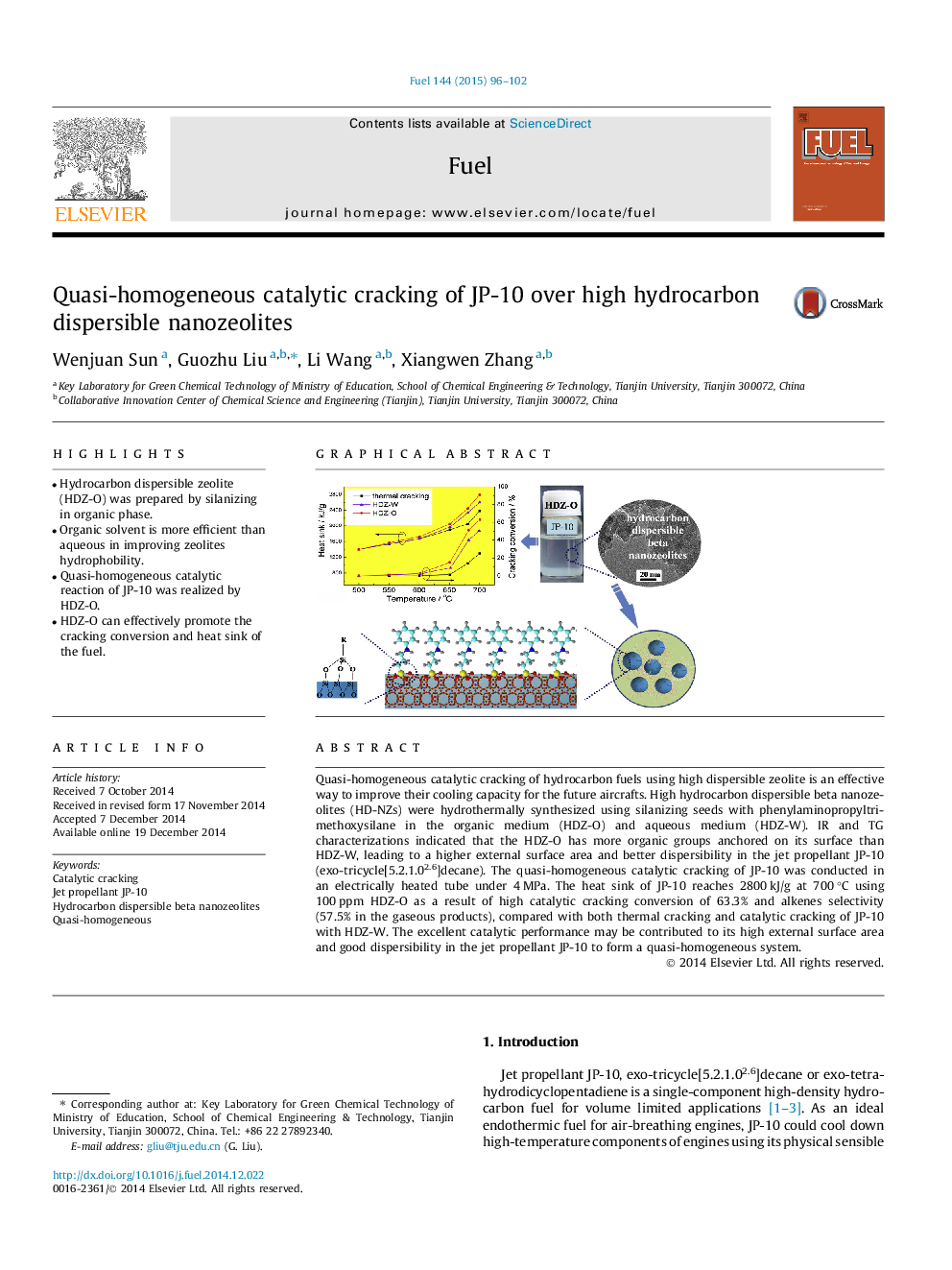| Article ID | Journal | Published Year | Pages | File Type |
|---|---|---|---|---|
| 205831 | Fuel | 2015 | 7 Pages |
•Hydrocarbon dispersible zeolite (HDZ-O) was prepared by silanizing in organic phase.•Organic solvent is more efficient than aqueous in improving zeolites hydrophobility.•Quasi-homogeneous catalytic reaction of JP-10 was realized by HDZ-O.•HDZ-O can effectively promote the cracking conversion and heat sink of the fuel.
Quasi-homogeneous catalytic cracking of hydrocarbon fuels using high dispersible zeolite is an effective way to improve their cooling capacity for the future aircrafts. High hydrocarbon dispersible beta nanozeolites (HD-NZs) were hydrothermally synthesized using silanizing seeds with phenylaminopropyltrimethoxysilane in the organic medium (HDZ-O) and aqueous medium (HDZ-W). IR and TG characterizations indicated that the HDZ-O has more organic groups anchored on its surface than HDZ-W, leading to a higher external surface area and better dispersibility in the jet propellant JP-10 (exo-tricycle[5.2.1.02.6]decane). The quasi-homogeneous catalytic cracking of JP-10 was conducted in an electrically heated tube under 4 MPa. The heat sink of JP-10 reaches 2800 kJ/g at 700 °C using 100 ppm HDZ-O as a result of high catalytic cracking conversion of 63.3% and alkenes selectivity (57.5% in the gaseous products), compared with both thermal cracking and catalytic cracking of JP-10 with HDZ-W. The excellent catalytic performance may be contributed to its high external surface area and good dispersibility in the jet propellant JP-10 to form a quasi-homogeneous system.
Graphical abstractFigure optionsDownload full-size imageDownload as PowerPoint slide
